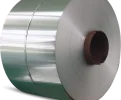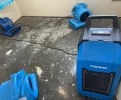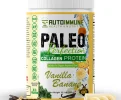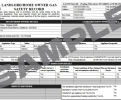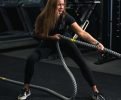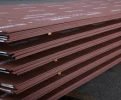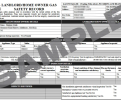Can I Do Wet Wall Drying Myself, or Should I Call Experts?

Water damage in your home can be alarming, especially when it affects walls and ceilings. Many homeowners ask themselves: Can I do wet wall drying myself, or should I call experts? Understanding the right approach is crucial to prevent long-term structural damage and ensure your home remains safe and healthy.
What Exactly Is Wet Wall Drying?
Wet wall drying is the process of removing moisture from walls that have been soaked due to leaks, flooding, or condensation. When walls stay wet for too long, they can develop mold, weaken structurally, and cause lasting damage. Wet wall drying involves extracting water, drying the internal wall cavities, and restoring the wall to its original condition.
While the concept seems simple, the process involves more than just using a towel or a fan. Professional wet wall drying requires specialized equipment like dehumidifiers, air movers, and moisture meters to monitor the drying progress accurately.
Why Is Ceiling Drying Also Important?
Water damage doesn’t only affect walls—it often spreads to ceilings. Ceiling drying is equally critical because a wet ceiling can sag, discolor, or even collapse if ignored. Ceiling materials like plasterboard and paint absorb moisture quickly, and if they remain damp, mold growth can occur within 24 to 48 hours.
Professionals ensure proper ceiling drying by combining air circulation with controlled heat and dehumidification, a method that homeowners rarely replicate successfully.
Can I Attempt Wet Wall Drying Myself?
Many homeowners consider DIY wet wall drying to save costs. Basic steps might include:
-
Removing surface water using towels or a wet vacuum.
-
Ventilating the room by opening windows and using fans.
-
Applying moisture-absorbing products, like silica gel or desiccants.
While these steps may help surface drying, they rarely address moisture trapped inside walls or ceiling cavities. Hidden moisture can continue to damage the structure and encourage mold growth.
What Are the Risks of DIY Wet Wall and Ceiling Drying?
Attempting wet wall or ceiling drying yourself comes with several risks:
-
Incomplete Drying: Moisture may remain in wall cavities, leading to mold and rot.
-
Structural Damage: Improper drying can weaken the wall or ceiling, increasing repair costs later.
-
Health Hazards: Mold exposure can trigger respiratory issues, allergies, and other health concerns.
-
Electrical Hazards: Wet walls may conceal electrical wiring. DIY attempts can be dangerous without proper precautions.
Even with careful attention, DIY methods rarely match the precision and safety of professional wet wall drying.
How Do Professionals Approach Wet Wall Drying?
Experts like Structural Drying Australia use advanced techniques to ensure thorough drying:
-
Moisture Assessment: Professionals use moisture meters to detect wet areas behind walls and ceilings.
-
Targeted Extraction: Water is extracted using high-capacity pumps and vacuums.
-
Controlled Drying: Industrial-grade dehumidifiers and air movers are deployed to remove residual moisture efficiently.
-
Continuous Monitoring: Experts monitor moisture levels regularly to ensure complete drying and prevent secondary damage.
This approach ensures both walls and ceilings are dried evenly and safely, reducing the risk of mold or structural deterioration.
When Should I Definitely Call Experts?
There are scenarios where calling professionals is the safest option:
-
After major flooding: If water has entered multiple rooms or reached structural components.
-
Persistent dampness: If walls or ceilings remain wet despite DIY attempts.
-
Visible mold: Any mold growth requires professional intervention for safe removal.
-
Ceiling damage: Sagging or discolored ceilings indicate hidden water accumulation.
-
Electrical risk: If water has reached areas near wiring or outlets.
Structural Drying Australia recommends professional intervention in these situations to avoid long-term damage and additional repair costs.
Can Insurance Cover Professional Wet Wall Drying?
Many homeowners wonder if insurance will cover wet wall drying and ceiling drying. In most cases, if the water damage is sudden and accidental (like a burst pipe or storm-related flooding), insurance may cover professional drying costs. Documentation, including photos and professional reports, is often required.
Hiring certified experts not only ensures proper drying but also provides detailed reports that support insurance claims.
What Makes Professional Drying More Effective Than DIY?
Professional drying is more effective than DIY because:
-
Specialized Equipment: Professionals use high-capacity air movers, industrial dehumidifiers, and moisture detection tools.
-
Experience: Technicians understand how moisture travels through walls, ceilings, and flooring, allowing them to target problem areas accurately.
-
Prevention of Secondary Damage: Timely professional intervention prevents mold, structural damage, and health hazards.
-
Efficient Process: Professionals can dry an entire wall or ceiling quickly, minimizing disruption and long-term damage.
Attempting to match this with household tools often results in incomplete drying and recurring issues.
How Can I Maintain Walls and Ceilings After Drying?
After wet wall drying or ceiling drying, ongoing maintenance helps prevent future problems:
-
Inspect for leaks: Regularly check pipes, roofs, and gutters for leaks.
-
Control humidity: Use dehumidifiers in high-moisture areas.
-
Ventilation: Ensure proper airflow in bathrooms, kitchens, and laundry rooms.
-
Prompt Repairs: Address minor water damage immediately to prevent escalation.
By following these steps, homeowners can extend the life of their walls and ceilings while reducing the risk of costly repairs.
Conclusion: DIY or Expert Intervention?
While small spills or minor dampness might be handled with DIY methods, wet wall drying and ceiling drying are often too complex and risky for homeowners to manage safely. Experts bring the right equipment, experience, and methods to ensure complete drying, structural integrity, and health safety.
For those facing serious water damage, calling professionals like Structural Drying Australia is the most reliable choice. Their comprehensive approach guarantees effective wet wall drying and ceiling drying while minimizing further damage.
Remember, acting quickly is crucial—delaying professional intervention can result in higher repair costs, mold growth, and long-term structural problems. If water has impacted your walls or ceilings, prioritize safety and efficiency by contacting experts immediately.
In summary, while DIY attempts may seem tempting, wet wall drying is best left to professionals. Protect your home, health, and investment by choosing certified experts, ensuring your property is dried correctly and safely. Structural Drying Australia provides industry-standard solutions to keep your home secure and damage-free.
ABOUT ME

Welcome to my blog Artcle slurp. We share latest article for all niche. If you want to publish your article then mail me on articleslurpblog@gmail.com






